Romynox certificaten portaal
Hoe wij uw bestelling naadloos verbinden
van onze locatie naar uw project
Certificaten in de (bio)farmaceutische industrie
Op zoek naar ons certificaten portaal?

EN 1024 :2004
TYPE 2.1 DECLARATION OF COMPLIANCE
Met het type 2.1 document verklaart de producent dat de producten in overeenstemming zijn met de bestelling. In deze verklaring wordt het chargenummer van de producten gegeven, maar worden noch de testrapportresultaten noch de chemische analyse aangekondigd.
TYPE 2.2 TEST REPORT
Met het type 2.2 document, het testrapport, verklaart de producent dat de producten in overeenstemming zijn met de bestelling. In het testrapport worden de resultaten van kwaliteitscontroletests op basis van niet-specifieke inspectie gegeven, in overeenstemming met de algemene materiaalnormen. De testresultaten zijn niet noodzakelijk afkomstig van de partij die aan de klant is geleverd.
Inspection certificate 3.1
Document uitgegeven door de fabrikant waarin hij verklaart dat de geleverde producten voldoen aan de eisen van de bestelling en waarin hij testresultaten levert. De testeenheid en de uit te voeren tests worden gedefinieerd door de productspecificatie, de officiële regelgeving en overeenkomstige regels en/of de bestelling.
Het document wordt gevalideerd door de geautoriseerde inspectierepresentant van de fabrikant, onafhankelijk van de productieafdeling. Het is toegestaan voor de fabrikant om relevante testresultaten die zijn verkregen door specifieke inspectie van primaire of inkomende producten die hij gebruikt, over te dragen naar het inspectiecertificaat 3.1, mits de fabrikant traceerbaarheidsprocedures hanteert en de vereiste bijbehorende inspectiedocumenten kan verstrekken.
TSE/BSE CONFIRMATION
Volgens de 'Nota voor richtsnoeren over het minimaliseren van het risico van overdracht van agentia voor dierlijke sponsachtige encefalopathie via menselijke en diergeneesmiddelen (EMEA/410/01 rev 3)' is het noodzakelijk om ervoor te zorgen dat wordt voldaan aan de vereiste voor de TSE/BSE-veiligheid van het gebruikte productcontactmateriaal bij de vervaardiging van medische producten.
Daarom leveren producenten vaak een conformiteitscertificaat dat de materialen die zij gebruiken niet onder de reikwijdte van de bovengenoemde richtlijn vallen.
FDA
Een federaal agentschap van het Amerikaanse ministerie van Volksgezondheid & Human Services is verantwoordelijk voor de bescherming en bevordering van de volksgezondheid door onder andere toezicht te houden op voedselveiligheid en biogeneesmiddelen.
De Amerikaanse Food and Drug Administration (FDA) legt regelgeving op aan drie verschillende soorten voedseladditieven:
Directe voedseladditieven zijn componenten die rechtstreeks aan het voedsel worden toegevoegd, zoals voedselkleurstoffen of kleurstoffen.
Secundaire directe voedseladditieven zijn componenten die worden toegevoegd als onderdeel van een behandeling of proces. Dit zijn stoffen waarvan de functionaliteit vereist is tijdens de fabricage of verwerking van voedsel en die normaal gesproken uit het uiteindelijke voedsel worden verwijderd.
Indirecte voedseladditieven zijn stoffen die in contact kunnen komen met voedsel maar niet bedoeld zijn om rechtstreeks aan voedsel te worden toegevoegd. Voorbeelden van indirecte voedseladditieven zijn verpakkingsmaterialen, containers en voedselverwerkingsapparatuur.
Waar komt FDA 21 CFR 177 in het spel bij sanitaire procesapparatuur? In één woord, overal. Elke soort sanitaire klep heeft een elastomeer afdichtingszitting. Elke sanitaire pomp heeft O-ringen die zijn geassocieerd met de afdichting. En natuurlijk hebben de meeste systemen veel sanitaire klemmen met sanitaire pakkingen.
CFR 21 FDA 177.1550
De federale wetgeving die indirecte voedseladditieven behandelt en de meest specifieke verwijzingen naar PTFE omvat, is CFR 21 FDA 177.1550, getiteld "Substances for Use as Basic Components of Single and Repeated Use Food Contact Surfaces, Sec. 177.1550 Perfluorocarbon resins".
CFR 21 FDA 177.2600
De federale wetgeving die indirecte voedseladditieven behandelt en de meest specifieke verwijzingen naar rubber en rubberproducten omvat, is CFR 21 FDA 177.2600, getiteld "rubber articles intended for repeated use". Goedgekeurde stoffen zijn onder andere acrylonitril-butadieen-copolymeer (Buna), silicone, polytetrafluorethyleen en ethyleen-propyleen-dieenmonomeer.
USP Class VI
De U.S. Pharmacopeial Convention (USP) is een non-profitorganisatie die standaarden creëert voor medicijnen, voedselingrediënten, voedingssupplementen en gezondheidstechnologieën. De USP publiceert biocompatibiliteitsprotocollen voor de kunststoffen en polymeren die worden gebruikt in medische apparaten of chirurgische apparatuur die in contact kunnen komen met menselijk weefsel.
De twee meest voorkomende testregimes die worden gebruikt om de biocompatibiliteit te meten, zijn USP <87> en USP <88>.
USP <87> is een in vitro test ontworpen om de biocompatibiliteit van het testmateriaal te beoordelen in contact met een specifieke celcultuur op een snelle en gevoelige manier. Er zijn drie verschillende manieren waarop deze test kan worden uitgevoerd, afhankelijk van het geteste materiaal:
- Agar-diffusie
- Direct contact
- Elutie
USP Klasse VI verwijst naar een van de zes aanduidingen voor kunststoffen uit General Chapter <88> van de United States Pharmacopeia and National Formulary (USP-NF). Dit hoofdstuk biedt richtlijnen voor het testen en certificeren van een materiaal voor gebruik binnen een medisch apparaat.
De USP Klasse VI aanduiding wordt beschouwd als de meest stringente en daardoor meest geschikte voor medische toepassingen. Het omvat de volgende drie in vivo <88> biologische reactie evaluaties, over het algemeen uitgevoerd op muizen of konijnen om het gebruik bij mensen na te bootsen:
- Acute systemische toxiciteitstest (systemische injectie)
- Intracutane test
- Implantatie test
Naast het aantonen van een extreem laag niveau van toxiciteit door het slagen voor deze drie tests, zal het materiaal worden onderworpen aan verschillende temperatuurbeoordelingen voor bepaalde tijdsperioden. De standaardtemperaturen zijn 50, 70 en 121 °C. Materialen die voldoen aan de USP Klasse VI normen zorgen over het algemeen voor een hoog kwaliteitsniveau en een betere acceptatie bij de FDA en USDA omdat de materialen aanzienlijk worden geacht het risico op schade aan patiënten door reactie op een giftig materiaal te verminderen.
USP <661> Plastic Packaging Systems and Their Materials of Construction
The purpose of USP <661> is to measure the physiochemical properties of impurities extracted from packaging for therapeutic products (pharmaceuticals, biologics, dietary supplements, and devices). The plastics used in packaging systems are composed of homologous polymers with a range of molecular weights and contain additives such as antioxidants, stabilizers, lubricants, plasticizers, colorants, and others. The extracted solution undergoes tests for identification of the material, physiochemical properties, and extractable metals.
Establishing the suitability of plastic packaging systems for therapeutic products involves multiple tests and testing procedures, as briefly outlined below:
- Material screening: Characterization of a packaging system's materials of construction to evaluate ingredients as probable extractables and potential leachables. Such a characterization facilitates the identification of materials that are suitable for use in packaging systems.
- Controlled extraction (simulation) study: Worst-case controlled extraction (simulation) study to determine the extent to which extractables may become probable leachables.
- Product assessment: Actual-case measurement of confirmed leachables in the therapeutic product in the pharmaceutical packaging/delivery system intended for the commercial market.
Additionally, information provided by the vendor(s) of plastic packaging systems and their associated materials or components of construction can facilitate suitability assessments, as such information may be appropriate additions to or surrogates for the results obtained by performing the tests noted previously.
USP <381> Elastomeric Closures for Injections
The purpose of USP <381> is to measure the physicochemical properties of impurities extracted from elastomeric closures. The extract solution is analyzed for non-volatile residue, turbidity, acidity/alkalinity, reducing substances, heavy metals, color, zinc, optical absorbance, ammonium, and volatile sulfides.
EHEDG
EHEDG, the (European Hygienic Engineering and Design Group) is a European-based non-governmental organization devoted to the advancement of hygienic design and food engineering. EHEDG is a consortium of equipment manufacturers, food industries, research institutes, and public health authorities, founded in 1989 to promote hygiene during the processing and packing of food products.
European legislation requires that handling, preparation, processing, packaging, etc.
of food is done hygienically, with hygienic machinery in hygienic premises (the food hygiene directive, the machine directive, and the food contact materials directive).
EHEDG provides practical guidance on hygienic engineering aspects, which details the principal hygienic design criteria to be met by equipment for the processing of foods. It gives guidelines on how to design, construct, and install such equipment so that it does not adversely affect food quality; especially safety. The guidelines apply to durable equipment used for batch and continuous, open, and closed manufacturing operations. As food safety does not end at the borders of Europe, the EHEDG actively promotes global harmonization of guidelines and standards.
The Pressure Equipment Directive 2014/68/EU
The Pressure Equipment Directive (PED) 2014/68/EU (formerly97/23/EC, applied up until 18.07.2016) [1] of the EU sets out the standards for the design and fabrication of pressure equipment (‘pressure equipment’ means steam boilers, pressure vessels, piping, safety valves and other components and assemblies subject to pressure loading) generally over one litre in volume and having a maximum pressure more than 0.5 bar gauge. It also sets the administrative procedures requirements for the ‘conformity assessment’ of pressure equipment, for the free placing on the European market without local legislative barriers. It has been mandatory throughout the EU since 30 May 2002, with 2014 revision fully effective as of 19 July 2016. The set out standards and regulations regarding pressure vessels and boilers safety are very close to the US standards defined by the American Society of Mechanical Engineers (ASME).
1935/2004/EC
Throughout the EU the core legislation controlling all food contact materials and articles is European Regulation (EC) number 1935/2004. This Regulation came into force on 3 December 2004 and replaced the previous ‘framework’ Directive that had been in place for fifteen years, Council Directive 89/109/EEC. The European Regulation is directly and fully applicable in all EU Member States.
The Regulation applies to all materials and articles which, in their finished state, are intended to come into contact with food, including so-called ‘active’ and ‘intelligent’ food contact materials and articles. It also brings two other types of materials or articles within the scope of the Regulation. The first are those materials and articles that can reasonably be expected to be brought into contact with foods, for example the linings inside refrigerators. The second are those that can reasonably be expected to transfer their constituents to food, for example, printing inks and adhesive labels that may be used on packaging.
ADI-Free Certificate
Materialen zonder dierlijke bestanddelen
Het ADI-Free certificaat (Animal Derived Ingredient-Free) bevestigt dat een product—meestal elastomere componenten zoals pakkingen, O-ringen en klepzittingen—geen dierlijke bestanddelen bevat in welke fase van de productie dan ook. Dit omvat de herkomst van grondstoffen, het productieproces en eventuele nabehandelingen.
Producten met een ADI-Free certificering zijn essentieel voor sectoren die de hoogste eisen stellen aan materiaalkwaliteit en veiligheid, zoals de biofarmaceutische industrie, de medische sector en de voedingsmiddelenindustrie. Deze toepassingen vereisen vaak materialen die vrij zijn van elk risico op besmetting of overdracht van door dieren overgedragen ziekten, zoals:
- Bovine Spongiform Encephalopathy (BSE)
- Transmissible Spongiform Encephalopathy (TSE)
Door gebruik te maken van ADI-Free gecertificeerde materialen kunnen fabrikanten voldoen aan strikte regelgeving en de veiligheid van producten garanderen in kritieke toepassingen.
ATEX
A potentially explosive atmosphere is composed of air mixtures of gases, vapors, mists, or dust, which can ignite under certain operating conditions.
Equipment and protective systems intended for use in potentially explosive atmospheres cover a quite large range of products, including equipment used on fixed offshore platforms, in petrochemical plants, mines, flour mills, and other areas where a potentially explosive atmosphere may be present.
The ATEX Directive 2014/34/EU relating to equipment and protective systems intended for use in potentially explosive atmospheres, has been applicable since 20 April 2016.
In this directive areas where hazardous explosive atmospheres may occur are classified into zones. The classification given to a particular zone, and its size and location depends on the likelihood of an explosive atmosphere occurring and its persistence if it does.
Areas classified into zones:
Hazard – Gas-vapor-mist
Zone 0 - A place in which an explosive atmosphere consisting of a mixture with air of dangerous substances in the form of gas, vapor, or mist is present continuously or for long periods or frequently
Zone 1 - A place in which an explosive atmosphere consisting of a mixture with air of dangerous substances in the form of gas, vapor or mist is likely to occur in normal operation occasionally.
Zone 2 - A place in which an explosive atmosphere consisting of a mixture with air of dangerous substances in the form of gas, vapor or mist is not likely to occur in normal operation but, if it does occur, will persist for a short period only.
Hazard - Dusts
Zone 20 - A place in which an explosive atmosphere in the form of a cloud of combustible dust in the air is present continuously, for long periods, or frequently.
Zone 21 - A place in which an explosive atmosphere in the form of a cloud of combustible dust in the air is likely to occur in normal operation occasionally.
Zone 22 - A place in which an explosive atmosphere in the form of a cloud of combustible dust in the air is not likely to occur in normal operation but, if it does occur, will persist for a short period only.
Equipment and protective systems intended to be used in zoned areas must meet the requirements of the directive. Zone 0 and 20 require Category 1 marked equipment, zone 1 and 21 require Category 2 marked equipment and zone 2 and 22 require Category 3 marked equipment. Zone 0 and 20 are the zones with the highest risk of an explosive atmosphere being present.
ISO 2230
Rubber Products - Guidelines for Storage
This International Standard gives guidelines for the inspection, recording procedures, packaging, and storage of products, assemblies, and components made from vulcanized or thermoplastic rubber prior to being put into circulation.
It applies to both solid and cellular rubber products prepared from dry raw rubber, latex, or other sources. It is not intended for use with raw rubber in bale, liquid (solution or emulsion), or particulate form, storage guidance for which is given in ISO 7664.
The recommendations for packaging form an integral part of the controlled storage procedure, as well as providing means of identifying the material and product.
Recommended shelf-life:
| Group | Initial Storage Period | Extension storage periods |
|---|---|---|
| A | 5 YEARS | 2 YEARS |
| B | 7 YEARS | 3 YEARS |
| C | 10 YEARS | 5 YEARS |
Group A: a.o. BR
Group B: a.o. NBR, IIR
Group C: a.o. EPDM, FKM

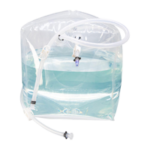 Single-Use
Single-Use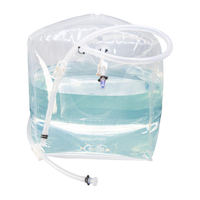
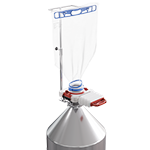 Containments
Containments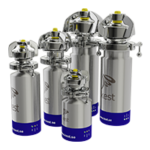 Mixers
Mixers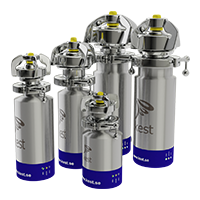
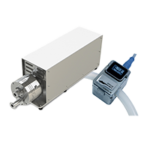 Pumps & Flow Measurment
Pumps & Flow Measurment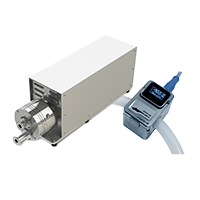
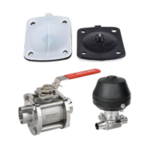 Afsluiters
Afsluiters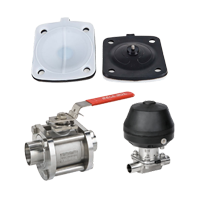
 Afdichting
Afdichting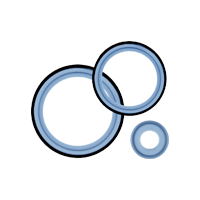
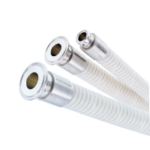 Slangen
Slangen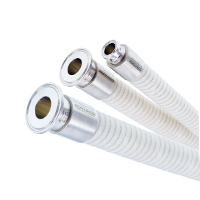
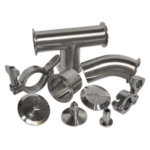 Fittingen
Fittingen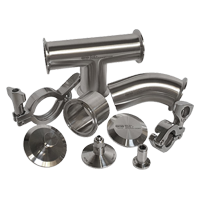
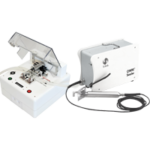 Tube Sealers & Welders
Tube Sealers & Welders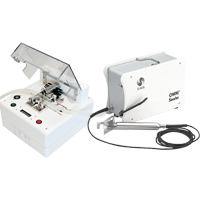
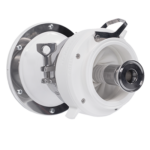 Transferports
Transferports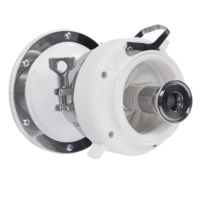
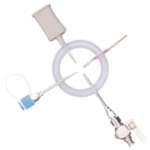 Validatie
Validatie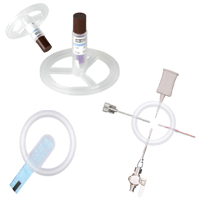

 Wij gebruiken cookies om ervoor te zorgen dat u een optimale website-ervaring heeft.
Wij gebruiken cookies om ervoor te zorgen dat u een optimale website-ervaring heeft.